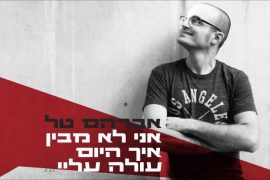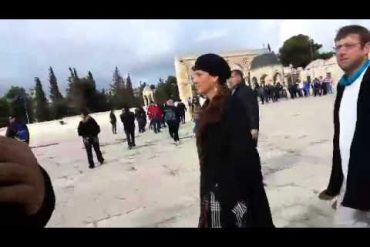The August 18th edition of the BBC World Service radio programme ‘World Update’ included an item about a photograph published in an American weekly newspaper which, with its circulation of some 20,000, reaches only a tiny fraction of the US population.
In addition to being included in the broadcast, that item was promoted separately on social media under the headline “Hillary Clinton Photo Breaks Ultra-Orthodox Taboo“.
“An Ultra-Orthodox Jewish New York newspaper, Yated Ne’eman, has made history by publishing a photo of presidential candidate Hillary Clinton. The Ultra Orthodox press has a tradition of not publishing images of women. The photo of her is largely obscured. Ari Goldman, professor of journalism at Columbia University tells Dan Damon what the photo looks like.”
After having asked his interviewee Ari Goldman to explain the Ultra-Orthodox press’ approach to the publication of photographs of women, presenter Dan Damon asked:
“And do Ultra-Orthodox women accept that in this day and age?”
One cannot but note the irony of that question, coming as it does from an employee of a Western media organisation which until not too long ago instructed its staff that:
“The Prophet Mohammed must not be represented in any shape or form.”
Following public debate, that editorial guideline was revised. It now reads:
“Due care and consideration must be made regarding the use of religious symbols in images which may cause offence. Images of the Prophet Muhammad are a sensitive issue, and many Muslims regard any depiction of the Prophet Muhammad as highly offensive. We must have strong editorial justification for publishing any depiction of the Prophet Muhammad. Any proposal to include a depiction of the Prophet Muhammad in our content must be referred to a senior editorial figure, who should normally consult Editorial Policy.
There also should be an awareness of religious sensitivities about smoking, drinking and certain foods.”
The BBC also adopted a policy of issuing ‘health warnings’ in the rare articles which do include “sensitive” images.

As we see, the BBC’s own approach to self-censorship of images it thinks its audiences might consider inappropriate is not so vastly different from that of Yated Ne’eman. Interestingly though, while a niche newspaper’s policy is considered newsworthy, its own is rarely brought to the attention of its audiences.
Related Articles:
Why was a photo-shopped image ‘top story’ on the BBC News website ME page?



